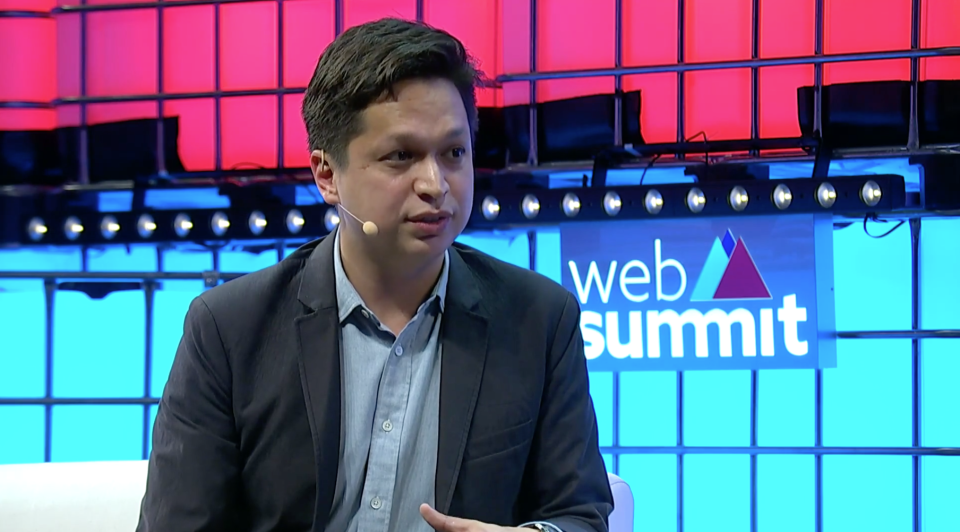Pinterest CEO: We have a different goal from Snapchat and Facebook
Pinterest CEO Ben Silbermann thinks temperance is key when it comes to people’s increasingly complex relationships with technology.
“Everything in moderation,” Silbermann said onstage on Wednesday at the annual WebSummit conference in Lisbon, Portugal. “There’s nothing wrong with keeping up with your friends or watching the news. But I think when it becomes habitual, when it becomes a reflex, that anytime you’re bored, you immediately go into a state that you’re thinking about other people, that balance tips a little bit. And I don’t think the answer is one app or two apps. It’s in people learning to integrate technology into their day-to-day life in a way that makes them over time feel fulfilled and happy.”

That’s where Pinterest’s chief executive contends Pinterest diverges from the pack. Where social platforms like Facebook (FB), Twitter (TWTR) Instagram and Snapchat (SNAP) place an emphasis on connecting with other users by sharing news and updates others may admire and envy, Pinterest’s goal is somewhat different.
“What people tell us is when they use Pinterest is they feel optimistic, because they’re thinking about what might be happening in the future. They tend to be thinking about themselves rather than what other people think of them. And they tend to find it rather fulfilling, and that’s partly because the proportion of services that are devoted to you and your interests is just much smaller than the number of services that are devoted to communicating with the outside world or keeping up to date on what’s happening in the news.”
A social network with an aspirational focus
Indeed, the company Silbermann helped launch in 2010 has always had more of aspirational bent for users who create visual pin boards featuring the so-called “basics”: items focused on their homes, the things they want to wear, the places they want to travel, rather than say, updates with news stories or glossy, filtered photos of their lives. And while Pinterest’s user base of 250 million pales in comparison to Facebook’s 2.2 billion-plus, the company’s narrower focus also helps explain why it has largely escaped criticism over the last two years while other platforms like Facebook have been lambasted for the spread of misinformation or creating feelings of unhappiness, even depression, among some of their users.
As Pinterest has grown, the company has doubled-down on e-commerce and visual recognition, rolling out tools like Pinterest Lens that let users identify items they like in the real world with the help of their smartphone camera, recommending similar items on Pinterest and often letting users purchase those items on the platform. The social network, which could go public sometime next year, is expected by one third-party estimate to generate roughly $750 million in revenues for 2018 — up from $473 million last year.
To that end, one of the most popular use cases for Pinterest’s 250 million users is creating boards with inspirational quotes.
“When people started using Pinterest, we noticed a lot of people creating boards that were really about a feeling. They would have a board of inspirational quotes. Or they would have a board of things that make me happy or things that make me relaxed. We didn’t know what to make of it, actually. We thought, oh, maybe this is a quirk of our really early user base, but we’ve seen that persist even now. There are a quarter billion users. That’s one of the most common ways people use Pinterest. They use it to pin things that make them feel better about themselves. … What that says to me is that people are looking for tools that help them feel better about themselves.”
That’s an insight Pinterest would do well to remember as it marches towards its IPO.
—
JP Mangalindan is the Chief Tech Correspondent for Yahoo Finance covering the intersection of tech and business. Email story tips and musings to [email protected]. Follow him on Twitter or Facebook.
More from JP:
